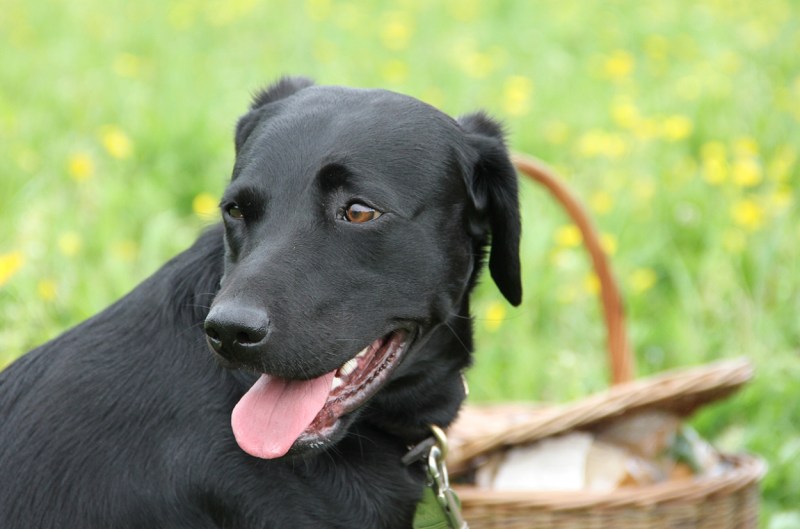Best Dog Friendly Gardens – From securing borders to protecting plants, here are tips for making your garden dog-friendly.
A garden can be a beautiful and fun place for dogs. But dogs can cause accidents, dig up plants and urinate on grass.
Best Dog Friendly Gardens

Gardens also contain dangers – some plants can be poisonous to dogs, and there are other dangers, from dangerous chemicals to sharp objects.
Dog Friendly Backyard Ideas For Any Budget
There are many things you can do to help your four-legged friend live in harmony, including planting non-toxic plants, creating dog-friendly areas, and keeping your garden safe.
Creating different routes through the park, such as clearly marked paths and designated play or digging areas, will stimulate your dog. A variety of surface textures can encourage footfall, and plants such as salix and ornamental grasses dance and provide entertainment.
A noisy dog can damage young plants or soft-stemmed plants by digging or walking. Plant large, vigorous perennials and choose hardy plants such as nepeta, astilbe and hardy geraniums
Species that can be toxic to dogs and the confusingly common name geranium). Use good stems from vigorous shrubs such as viburnum or rose bushes.
Royal Botanic Gardens Melbourne With Dogs: Punt, Movie & Picnic
Many garden plants are potentially toxic to dogs. These include chrysanthemum, aconite, buttercup, daffodil, laurel, delphinium, foxglove, hydrangea, oak, tomato, wisteria and yew (Taxus baccata). If you notice worrisome symptoms and think your dog may have ingested part of the plant, take your pet to the vet. Watch a video about poisonous plants for dogs.
Dogs can damage lawns and borders, so create special areas for playing or digging using sand or bark. To prevent dogs from crossing your border, you can create a path through it or create a clear border, such as a low box fence. Bunk beds are also a good choice.
If you have a dog, you can still have a beautiful garden – most plants are not dangerous to dogs. These include snapdragons, daisies, camellias, roses, sunflowers, elaeagnus, centaurea (cornflowers), impatiens and calendula.

Some dogs will dig through fences or escape through holes in walls, so make sure your fence has a solid foundation. Dogs can jump very high, so if you have a medium-sized dog, make sure your fence is at least 6 feet high. Always keep the gate secure.
Costs For A Basic Pet Friendly Garden
Keep an eye on your dog and make sure he doesn’t eat snails or slugs. Do not use inorganic slug pellets as they are toxic to all wildlife. Lungworm can be contracted by eating infected slugs, snails, or frogs. Symptoms include difficulty breathing, coughing, lethargy, and longer-than-usual bleeding.
Storerooms can contain dangerous chemicals and sharp tools – make sure they are tightly closed.
Avoid using chemicals such as inorganic snail pellets, which can be dangerous if your dog eats snails or slugs. Learn how to manage slugs and snails organically. And don’t add additives to ponds or ponds, as dogs will be tempted to drink from them.
Like chocolate, this byproduct of the chocolate industry can be dangerous if eaten – and the smell of chocolate is enticing. Use alternative mulches such as bark chips.
Dog Friendly Things To Do In The New Forest
Compost bins with food scraps have the potential to attract the attention of dogs and may contain potentially hazardous contents. Some foods, such as avocados, grapes, raisins, and onions, can be harmful, so keep them out of the trash.
Weeding can cause yellow spots. Train your dog not to damage the grass or use a hose in the area. Learn more about dog peeing on grass.
Better safe than sorry If you suspect your dog has eaten plants, snails or slugs in the garden and shows signs of illness, don’t hesitate to take him to the vet.

Subscribe today for £19.99 for every 6 issues and get 2 for 1 access to our cards and a picnic blanket.
Dog Friendly Sheffield Awards 2022
The July issue of BBC Gardeners’ World is on sale now, buy now online or in stores. A park can be a great place for your dog to explore and exercise. But dogs can sometimes damage green spaces by digging holes, using grass as toilets, and messing up areas they shouldn’t! Fortunately, there are plenty of tips and tricks to help your dog and your garden live happily together, from introducing dog-friendly plants to avoiding chemicals and learning the benefits of artificial grass.
Some dogs like to dig in flower beds and fences, so make sure your fence or boundary is sturdy at the bottom. Barriers or fences must not have openings for passage. Dogs can jump very high, so a fence should be at least 6 feet high to contain them. The gate must also be locked at all times.
Dogs love to sniff and eat their way through plants, but some can be poisonous to their canine friends. Poisonous varieties include Azaleas, Begonias, Cyclamen, Daffodil bulbs, Foxgloves, Hyacinths, Hydrangeas, Lupins, Rhododendrons and Yews. You should avoid these plants and stick to dog-friendly plants like sunflowers, camellias, snapdragons, and roses. Always take your dog to the vet if you think he has eaten a poisonous plant.
Avoid chemicals such as slime pellets that kill lawn grass and contain toxins. Both can be harmful to dogs if swallowed. It can also be dangerous if your dog eats snails or slugs that have been treated with toxic pellets. Choose organic and pesticide-free foods that are healthy for dogs and other wildlife. Synthetic grass also has the advantage of reducing the use of weeds in lawns.
Best Dog Friendly California Vacations For Your Pup
Certain areas in your garden are off limits for your dog. Cages can contain tools and sharp substances that are dangerous to animals, so they should be locked.
Composting sites can attract dogs because of the unbearable smell! Be careful that your composting area is very safe and does not contain food waste that can be harmful to dogs, such as onions, garlic, raisins, grapes, corn, and avocados.
Pools, like water sources, can be attractive to most dogs. So, until your dog gets used to going to the pool, it should be for the screen. A beach line is a good idea for your dog to get out of when he gets into trouble. Fences and fences are a great way to introduce natural screens to keep your dog away from confined spaces.

Native grasses are easily damaged by dogs digging holes in the lawn, and dog urine can cause the grass to turn yellow. Artificial grass has many advantages. Dogs love thick and durable fake grass material just as much as people do!
Dog Friendly Guide To Sherbrooke, Quebec
It can’t be dug into the energetic frenzy to create a comfortable and fuzzy mess. A shorter pile of fake grass is easier to keep clean and easier for the dog to crawl on than real grass, especially if real grass is long and wet. Synthetic grass allows urine to flow over the surface so it doesn’t pool or smell. If your dog likes to use the same area, you can wash or spray the area with water to prevent long-term damage.
Having a dog and a garden can be a positive and enjoyable experience, and it doesn’t have to mean your garden suffers because of your dog. If you would like to learn more about the benefits of artificial grass, please see Astro Warehouse. We have a wide range of artificial grass products to suit gardeners and dog owners alike. Contact the team at Astro Warehouse for reliable advice on artificial grass suppliers. Looking for pet-friendly perennials for your garden? Caring for your four-legged friends includes protecting them inside and out, which means creating a safe garden for them to play in. Whether they’re exploring, playing catch, or playing in the grass, we need to make sure we create a safe environment for pets to play. There are varieties that are safe and should not be grown for the health of dogs and cats. There are also perennials to add to your garden to ward off unwanted pests!
Dogs love to jump, run, explore and smell everything! As a very curious animal, dogs are interested in their environment. They learned that all the smells they encountered could cause problems in describing certain plants. Getting too close or chewing on the wrong type of plant can harm your four-legged friend. While you can’t control what’s growing in your neighborhood, you can protect your yard from kids. Fortunately, there are perennials that are safe for your pet. Some of our favorites to add to your garden include Columbine (Aquilegia), Coral Bell (Heuchera), Phlox, Bee Balm (Monarda), and Rose of Sharon (Hibiscus). This variety is greatly improved
Denver botanic gardens dog friendly, botanical gardens dog friendly, dog friendly gardens, bee friendly gardens, longwood gardens dog friendly, pet friendly hotels near busch gardens, images of dog friendly gardens, callaway gardens dog friendly, friendly gardens, pet friendly hotels busch gardens williamsburg, dog friendly beer gardens, dog friendly gardens design ideas

